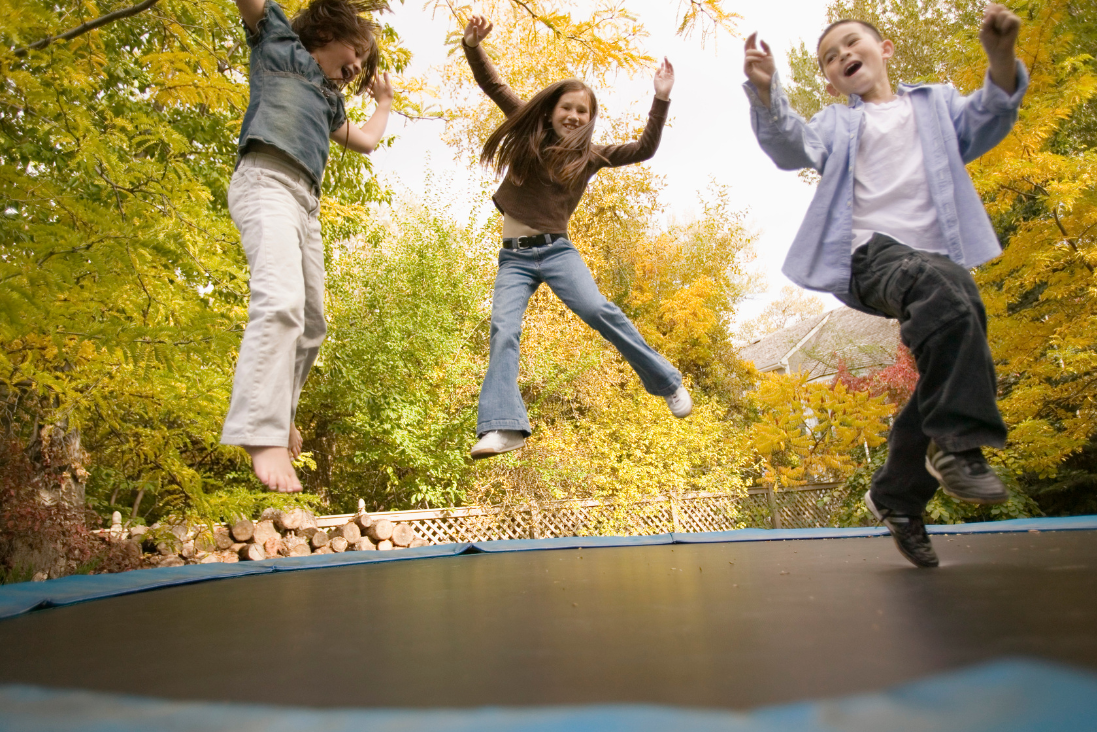5 Things I Wish I Knew Before I Bought My First Trampoline

Trampolines are so simple and fun. You picture the kids bouncing joyfully, maybe envision a few fun workouts for yourself, and you pull the trigger on what seems like a solid deal. But once that trampoline is in the backyard, reality sets in. There are a few things I wish I’d known when I bought my first trampoline that could have perhaps even saved me some cash and a few headaches.
It Takes up a Lot of Space
First, let’s talk about space. The excitement of adding a trampoline to your home can make you overlook the size it will actually take up in your backyard. I measured the diameter of the trampoline, but what I didn’t fully grasp was the importance of the surrounding clearance space.
You need a decent buffer zone around the trampoline, free from trees, fences, and other obstacles, to keep jumping safe. Also, consider the overhead clearance; there’s nothing quite like the unpleasant surprise of your child reaching new heights and nearly grazing the tree branches you thought were well out of reach.
Trampolines come in various sizes, typically ranging from 8 feet to 15 feet in diameter for round models, with rectangular ones offering different dimensions. The right size for you depends on a couple of factors. Check how much space you have in your backyard, how many people will be using it at once, and, most importantly—the weight consideration.
Smaller trampolines, around 8 to 10 feet, are best suited for younger children or single jumpers, while 12 to 14-foot models offer a better experience for families or multiple users.
Assembly Isn’t That Easy
Putting together a trampoline isn’t like assembling a new piece of furniture or a small indoor slide—it’s more of a team sport that demands patience, strength, and, ideally, a few extra hands. When my first trampoline first arrived, I thought I’d manage with a basic tool kit and sheer willpower. However, what I found was that many hands make light work, and certain stages of assembly require more than one person—particularly when attaching the springs. The tension required to attach them correctly is no joke and can be quite challenging if you’re flying solo.
The process involves a lot of components: frames, springs, mats, safety nets, and more, all of which need to be assembled in a specific order. It’s crucial to follow the instructions to a tee. You might also want to invest in a spring tool if one doesn’t come with the kit. Trust me, your fingers will thank you later. There’s something rewarding about seeing it all come together, though, and the initial hard work pays off once you see the kids bouncing with glee.
You Need to Consider the Weight Limit
A trampoline’s weight capacity is determined by the frame’s strength, spring quality, and mat material. Frames made from high-quality galvanized steel with thick tubing generally support more weight, offering durability and stability.
The springs play a crucial role in providing the trampoline’s bounce. Trampolines made with high tensile strength can endure more weight and repeated use.
I also made sure that my first trampoline had high-grade polypropylene mats, which are much more capable of handling frequent impacts without wearing out prematurely.
Weight limit is a bit consideration, and it depends on the trampoline size, really. For instance, 12-14-foot trampolines typically support 250-450 pounds, making them suitable for medium-sized yards and small groups. Meanwhile, 14-15-foot models can handle 250-500 pounds, which is ideal for larger families or athletic activities.
Rectangular trampolines are often designed to hold even more weight, sometimes exceeding 1,000 pounds, and are perfect for gymnasts or multiple users who want to enjoy a higher bounce and larger jumping area.
Related: Make Your Backyard a Summer Playground
Safety and Maintenance
Safety is one aspect I wish I had considered more thoroughly from the get-go. Sure, I knew about installing the safety net and padding, but I underestimated the importance of regular checks and maintenance. Once your trampoline is up and running, it’s not a set-it-and-forget-it deal. Regularly inspect the springs and frame for wear and tear, especially after bouts of bad weather. Over time, exposure to the elements can weaken these components, making them less effective and more dangerous.
Another thing to keep in mind is setting rules for safe play. It’s easy to assume kids will use the trampoline safely, but it’s better to have a few ground rules. Limit the number of jumpers at a time, avoid flips unless the jumper is trained, and always use the safety net. It’s not just about preventing falls—it’s about ensuring the whole experience is enjoyable and safe for everyone involved.
Maintenance goes beyond checking for physical damage. Cleaning is something that doesn’t cross your mind until you’re faced with a muddy mess. Depending on your location and weather, you might need to clean the trampoline more frequently than anticipated. In regions with a lot of rain or pollen, for example, the mat can become slippery or dirty quite quickly. A simple spray-down with a hose and occasional scrubbing can keep things fresh and prevent potential slipping hazards.
Consider investing in a trampoline cover to protect it from the elements when not in use. This simple addition can significantly extend the life of the mat and springs. Also, during the winter or windy conditions, ensure the trampoline is properly anchored. You don’t want to wake up after a storm to find it tipped over or, worse, blown away.
Why Trust Us?
You can trust My Family Life to provide practical tips and product recommendations that genuinely prioritize your family's best interests. As parents ourselves, our mission is to create a supportive community where you feel empowered and informed, knowing that we genuinely care about making your parenting experience as smooth and joyful as possible.